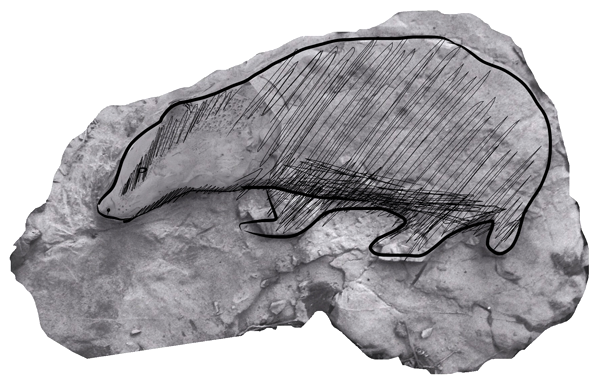
Posh Name: Meles meles
Diet: Badgers are omnivores like us, but unlike us they eat several hundred worms every night! They also like elderberries, bluebell bulbs and insects.
Habitat: Badgers like to live in woodland areas or pastures with lots of earthworms, though you will sometimes find them in city suburbs or large gardens.
Lifespan: In the wild badgers usually live to be around 2 years old, though they can live up to 14!
Size/Weight: Adults are usually 70-100cm long and weigh between 6 and 14kg.
Home: Badgers live with their families in setts. A badger sett is made up of lots of large underground tunnels with different rooms for sleeping, lots of entrances and even toilets! Badgers inherit their setts from their parents and then improve them, so some badger sets can be hundreds of years old!
Mating and Courtship: Badgers are social animals and like to live with their families, so a pair of badgers will usually mate for life. They can mate at any time of year, for a couple of days every month, but they will almost always give birth in spring! This is because female badgers can choose when to let her cubs grow inside her! She will old on usually until December, so that her cubs are born in early spring when there is lots of food around and the temperature is good.
Babies: Badgers are born in litters of up to 6 babies at a time. They are born blind and stay underground in one of the bedroom chambers in their family sett. They start to open their eyes at five weeks old and will start to go outside after eight weeks. The mother badger, which is called a sow, will suckle her cubs until they are twelve weeks old. Then she will wean them by regurgitating half-digested food for them to eat! Badger cubs start to hunt for themselves at about six months old, but stay living with their parents in their large family home often for their whole lives.
Defining Features: Badgers are strong, well-built animals, about the size of a small dog, but with very short, powerful legs and sharp claws. They have a black belly and a grey back but their most distinctive feature is their white faces with a black stripe over each eye. They have big black noses which they use to forage for food.
Peculiar Behaviour: Badgers are very clean, house-proud animals. They build their toilets away from the main tunnels in their setts and won’t bring food into their home. They even change their bedding regularly, dragging old hay, bracken and grass outside using their chins, to get rid of fleas and parasites.
Weaponry: Badgers are strong animals but their main weapons are their powerful sense of smell and big sharp claws. They have five toes and their front paws are bigger and stronger than their back, so that they can dig deep holes in search of rabbits and worms. They have very thick skin and are one of the only animals who can catch and eat a hedgehog. They are so strong and good at digging that they can knock a whole human house down if they dig too much underneath it!
Vulnerability: The only real threats to badgers are human beings and cars. They are such strong, clever animals that most predators won’t attack them, and anyway they are not good to eat! Being nocturnal (awake at night) badgers don’t have very good eyesight, and so often wander onto main roads. Because they are black they are easy to miss on a dark night. That’s why you often see dead badgers on the side of the road when you’re driving in the country.
» Badger
» Buzzard
» Dormouse
» Fox
» Hedgehog
» Mouse
» Otter
» Raven
» Robin
» Roe Deer
» Squirrel
» The Green Man
» Weeny
You can’t have one; they come in setts
They often have untidy fur
And unlike cats they never purr
They’re not like dogs, they don’t do tricks
They won’t chase after balls or sticks.
They’re up until the early hours
They’ll more than likely eat your flowers
They have grizzly teeth and claws to boot!
But I don’t care. My badger’s cute.

